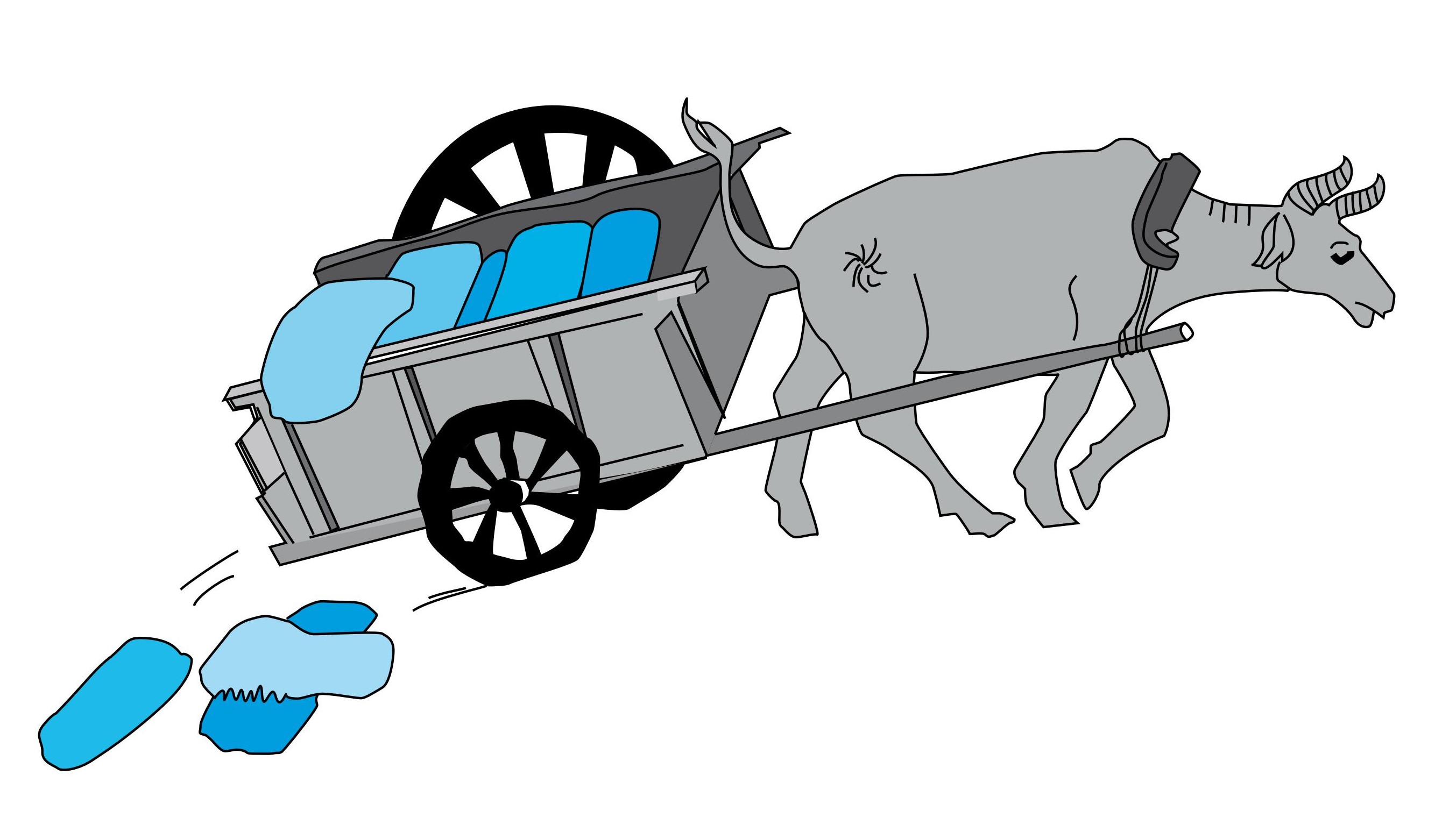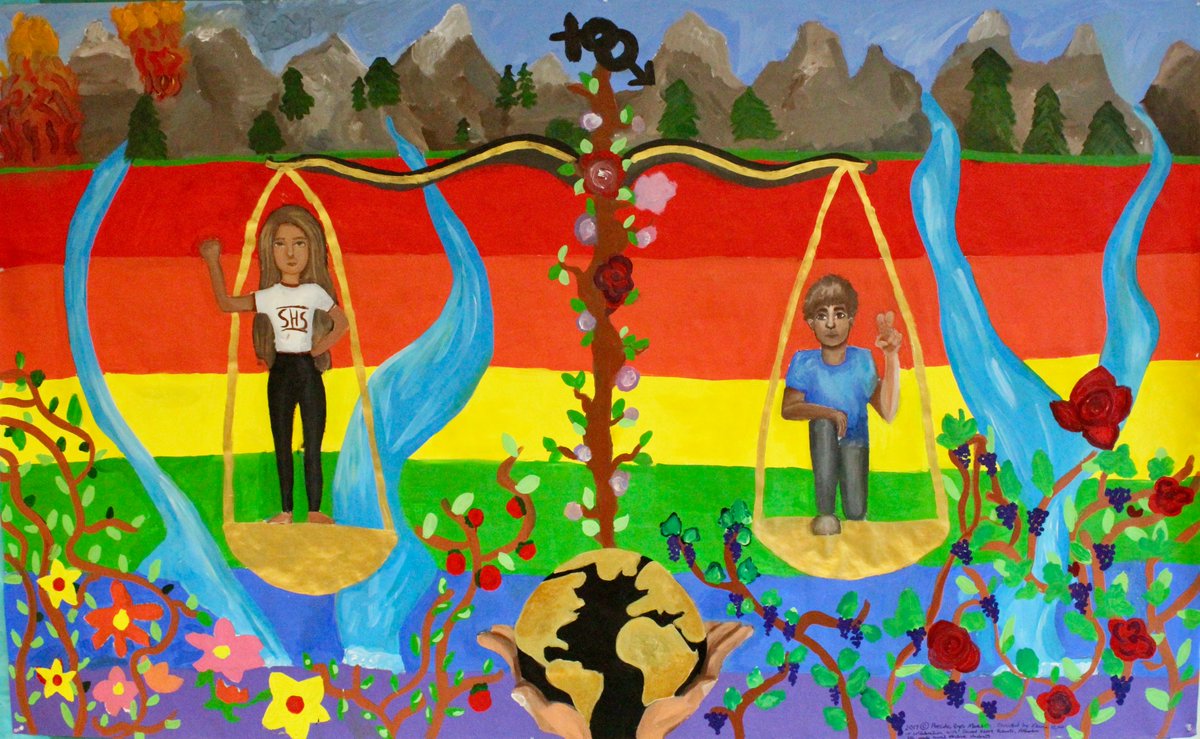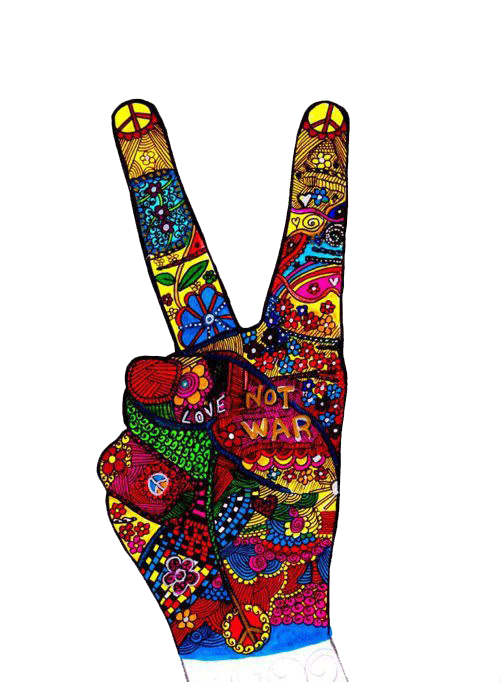 For this assignment, I have preferred to interview one of my friends on campus and report her thoughts. We are studying in the same department (ELT). From my lofty vantage point, she is quite experienced and open to teach about the kinds of topics (name-calling and bias, gender roles, and family diversity) and to support LGBTQ+ students to create inclusive classrooms. My questions are more focused on the pedagogical voice since I believe that we are already familiar with LGBTQ+ persons, their behavioral preferences and practices, fantasies, and feelings of affection and emotional affinity. We are also quite aware of the challenges they are facing in their daily lives. However, we really don't know how to treat and back up them. As teachers, if we are willing to help them, a classroom is the place to start because teachers play a crucial role in supporting and advocating for LGBTQ+ students, ensuring they can learn and explore in a safe classroom space. So, my interview questions include:
For this assignment, I have preferred to interview one of my friends on campus and report her thoughts. We are studying in the same department (ELT). From my lofty vantage point, she is quite experienced and open to teach about the kinds of topics (name-calling and bias, gender roles, and family diversity) and to support LGBTQ+ students to create inclusive classrooms. My questions are more focused on the pedagogical voice since I believe that we are already familiar with LGBTQ+ persons, their behavioral preferences and practices, fantasies, and feelings of affection and emotional affinity. We are also quite aware of the challenges they are facing in their daily lives. However, we really don't know how to treat and back up them. As teachers, if we are willing to help them, a classroom is the place to start because teachers play a crucial role in supporting and advocating for LGBTQ+ students, ensuring they can learn and explore in a safe classroom space. So, my interview questions include:
- What do you think to be an ally to LGBTQ+ students mean?
- Do you think it’s important to be an ally to LGBTQ+ students?
- How can teachers become allies in fighting for the rights of LGBTQ+ students?
Before asking her to answer the questions, I sent her an interview confirmation email. In this mail, I gave information about the aim of the interview and the confidentiality of the responses she was going to provide. The email is attached below:

After that, I gave her time to check the questions and ask me anything she couldn't figure out. She just asked me whether she could answer in a paragraph or not because she thought that the questions were connected. I willingly accepted her suggestion. And now, I am presenting here the answer to the questions.
It was nine years ago, and at that time, I had a course for my MA. We were eight or nine sitting in U shaped desks, so I could easily recognize her/his face, attitude, or mimic. Those days, I cannot say that I exactly knew what LGBTQ+ means or how to behave towards her/him. There was one thing that shaped my vision: humanity. This view showed me how to look at the world since there was one world that is free of the outer and inner world. One source: how you look at yourself reflects on your environment. I, therefore, can truly say that the notion of LGBTQ+ does not mean to me that LGBTQ+ students are the ones who are bullied or harassed since the essence of humanity is the one.
Now, I am a pre-service teacher, and I am on the other side of the coin. Being a teacher in the twenty-first century means new responsibility in every aspect. Being an ally to LGBTQ+ students is the leading one. Wherever you are, maybe you are in a university or in a practicum school, it does not matter. The point is that you are the one holding the key. I regard ''this issue'' (in fact, I do not want to say that) as a collective responsibility, and if I am a future teacher, I should have a voice when they do not have in that they are not individuals because of their tendency. At that point, not only teachers or other opinion leaders but also all people who are aware of the sensibility of the issue should be allies at universities, schools, or other places. For me, ''this'' should not be handled by only specific groups. So, I am an ally to LGBTQ+ students. In other words, I do not identify myself as LGBTQ+ person; however, I support both LGBTQ+ individuals and communities and advocate them.
When I question myself about how to be a voice on behalf of them, literature can be one of the resources I can apply in the class by taking advantage of its unifying energy, which gathers each human in a society or even in the world. Any passage should be read and can be expected to think about it. In the beginning, for young or adult learners, gaining awareness of the matter can be the first step by making them read a text without asking them anything. Just let them read. In that way, students will have a chance to notice the differences, and these differences are the things that bind us together. Another way can be watching films or videos related to this topic. When I was a preservice teacher in a high school, I had made students watch a short movie about teenage problems. One of them was being bullied because of being G. After the movie, I asked them about how they would feel when they were bullied so that I wanted them to develop empathy.
Generally, LGBTQ+ students are more inclined to skip school due to feeling unsafe or having previously been bullied. Considering this fact, as LGBTQ-allied teachers, we should prevent bullying, ensure inclusion, and make each student feel safe. To give an example, it is imperative that teachers swiftly respond to bullying by immediately addressing the aggressive student. To provide appropriate intervention for that student, teachers may also consult school administrators or school services like counseling or therapy. Moreover, it is essential to set clear goals when it comes to bullying or harassment due to sexual orientation. Likewise, teachers must warn the students that homophobic or transphobic language use in the classroom or school environment will not be tolerated. Additionally, teachers can implement LGBTQ-inclusive lesson plans to accomplish extra-curricular activities. Even if they couldn't find time to do it, they could mould and interrogate the content by using materials reflecting LGBTQ+ to prepare other students for interacting within our society appropriately. Lastly, teachers should be a model if they want to prevent bullying.
To conclude, resources, activities, and measurements can be varied. The key is the teacher. They should be open to innovation and follow it.
My friend has also used this website (https://www.accreditedschoolsonline.org/education-teaching-degree/lgbtq-youth/) to get further information.
 After the interview, I also recommended her to watch a movie called ''The Imitation Game'' that gives her further ideas about the feelings of LGBTQ+ persons and the challenges they are facing. This film can also be used to show the students that we shouldn't give up easily no matter what we are facing today or no matter how challenges or obstacles are in our life.
After the interview, I also recommended her to watch a movie called ''The Imitation Game'' that gives her further ideas about the feelings of LGBTQ+ persons and the challenges they are facing. This film can also be used to show the students that we shouldn't give up easily no matter what we are facing today or no matter how challenges or obstacles are in our life.
Expert Review.mp4 (9.33 mb)
Official Trailer.mp4 (12.76 mb)
 The coursebook I examined is Count Me In (12th Grade) published by MNoE (Picture 1.1). The reason why I choose this coursebook is that the themes and activities highlight key values friendship, justice, honesty, self-control, patience, respect, love, responsibility, patriotism, and altruism more often when compared to books belonged to primary schools. However, these values are not considered as a separate entity. Rather, they are embedded in the themes and topics of the syllabi. My focus is on the first, second, and eighth units of the coursebook.
The coursebook I examined is Count Me In (12th Grade) published by MNoE (Picture 1.1). The reason why I choose this coursebook is that the themes and activities highlight key values friendship, justice, honesty, self-control, patience, respect, love, responsibility, patriotism, and altruism more often when compared to books belonged to primary schools. However, these values are not considered as a separate entity. Rather, they are embedded in the themes and topics of the syllabi. My focus is on the first, second, and eighth units of the coursebook.
In the first unit (Music), the primary aim is to encourage the students to practice agreeing and disagreeing with each other by sharing their opinions about music. They also exchange ideas about their music preferences through the help of surveys/interviews.
 In the exercise given above (Picture 1.2), the students listen to the eight extracts of different music types and identify what sort of music they are. Then, they are supposed to write the numbers in the boxes. On the one hand, this activity includes several musical instruments that reflect some cultural aspects of the target language. As Celik and Turkan (2007) put, it is essential that textbooks include several aspects of the target culture, such as oral and written history, literature, music, drama, dance, visual arts, celebrations, and the lifestyle of native speakers. In this regard, the textbook we're talking about is quite successful because it introduces us to English-speaking cultures by representing their musical instruments. However, it is most likely that there will be some students who won't be familiar with these types of instruments because of the cultural differences. Therefore, what I recommend is that there be at least two or three pictures, characterizing first culture (source culture). As Arslan (2016) asserts, there should be a balance in the integrity of native culture, target culture, and international culture, which means cultural items should be distributed in a heterogeneous way. Consequently, I could add pictures of some musical instruments representing our culture. In this way, students learn about both their culture and other cultures. Furthermore, learners see the differences between cultures, and they may learn how to tolerate these differences.
In the exercise given above (Picture 1.2), the students listen to the eight extracts of different music types and identify what sort of music they are. Then, they are supposed to write the numbers in the boxes. On the one hand, this activity includes several musical instruments that reflect some cultural aspects of the target language. As Celik and Turkan (2007) put, it is essential that textbooks include several aspects of the target culture, such as oral and written history, literature, music, drama, dance, visual arts, celebrations, and the lifestyle of native speakers. In this regard, the textbook we're talking about is quite successful because it introduces us to English-speaking cultures by representing their musical instruments. However, it is most likely that there will be some students who won't be familiar with these types of instruments because of the cultural differences. Therefore, what I recommend is that there be at least two or three pictures, characterizing first culture (source culture). As Arslan (2016) asserts, there should be a balance in the integrity of native culture, target culture, and international culture, which means cultural items should be distributed in a heterogeneous way. Consequently, I could add pictures of some musical instruments representing our culture. In this way, students learn about both their culture and other cultures. Furthermore, learners see the differences between cultures, and they may learn how to tolerate these differences.
 The second unit of the book is Friendship (Picture 1.3). Describing personal features, making conclusions, and stating reasons are the functions of the second unit. While evaluating the unit, I noticed that people from different countries appear in the picture (Ethnicity). As Bulut and Arıkan (2015) state, course books should include people from various cultures because English language speakers come from all sorts of life. In that sense, this coursebook is successful in maintaining diversity and ethnicity because it presents a visual input that shows multicultural friends.
The second unit of the book is Friendship (Picture 1.3). Describing personal features, making conclusions, and stating reasons are the functions of the second unit. While evaluating the unit, I noticed that people from different countries appear in the picture (Ethnicity). As Bulut and Arıkan (2015) state, course books should include people from various cultures because English language speakers come from all sorts of life. In that sense, this coursebook is successful in maintaining diversity and ethnicity because it presents a visual input that shows multicultural friends.
 Moreover, while turning the pages of the coursebook, I found a listening text (Picture 1.4) in which the students are talking about a teacher named Mr. Robbins. The text also includes a picture of the mentioned students. In the related picture, a student sitting in a wheelchair got my direct attention (Disability). By using these kinds of pictures in the coursebook, we can prove that disability is not a curse or an unwanted condition, and people with disabilities shouldn't face discrimination, abuse, and an inaccessible environment. Also, the incorporation of people with disabilities into the EFL coursebooks could eliminate the alienation of pupils with disabilities in regular schools. Therefore, we should increase the visibility of people with disabilities in the illustrations of Turkish EFL (English as a Foreign Language) textbooks. Although the topic ''Friendship'' can promote and strengthen friendships between teens, it touches upon the qualities of a good friend, which may cause learners to hypothesize some misconceptions regarding the characteristics of an ideal friend. Besides, learners may escape from interacting with their peers if they think that s/he doesn't have the aspects of a good friend.
Moreover, while turning the pages of the coursebook, I found a listening text (Picture 1.4) in which the students are talking about a teacher named Mr. Robbins. The text also includes a picture of the mentioned students. In the related picture, a student sitting in a wheelchair got my direct attention (Disability). By using these kinds of pictures in the coursebook, we can prove that disability is not a curse or an unwanted condition, and people with disabilities shouldn't face discrimination, abuse, and an inaccessible environment. Also, the incorporation of people with disabilities into the EFL coursebooks could eliminate the alienation of pupils with disabilities in regular schools. Therefore, we should increase the visibility of people with disabilities in the illustrations of Turkish EFL (English as a Foreign Language) textbooks. Although the topic ''Friendship'' can promote and strengthen friendships between teens, it touches upon the qualities of a good friend, which may cause learners to hypothesize some misconceptions regarding the characteristics of an ideal friend. Besides, learners may escape from interacting with their peers if they think that s/he doesn't have the aspects of a good friend.
The third unit is ''Human Rights''. I think this topic is totally open to the inclusion of social justice. For example, the teacher can ask the students to make suggestions about improving human rights by completing the exercise given below (Picture 1.5). The students can also write an argumentative essay, including solutions for disadvantaged people’s problems. Furthermore, they can write mottos/slogans about human rights and act them out through the help of role-playing (Picture 1.6).



Besides, they can watch a short video that explains The Universal Declaration of Human Rights, which was adopted by the United Nations in 1948 and discuss the basic advantages around them.
Alternatively, they can watch a short which celebrates the 50th anniversary of Amnesty International in the United States of America. They should try to spot which human rights abuses are shown in the film and discuss how to solve them.
 I especially favored the activity in which the students are asked to analyze the paper headlines related to human rights and share their opinions (Picture 1.7). I think this activity has a positive impact on the students because it shows that we can maintain human rights together (globally) no matter how problems arise (optimistic approach). This activity is also an example of the usage of authentic material (newspaper), which leads the students to relate the topic to their lives and provides long-term retention. Therefore, I think this book is sufficient to have the students develop an understanding of what human rights are, appreciate the relationship between rights and responsibilities and apply the concepts of human rights to their own lives.
I especially favored the activity in which the students are asked to analyze the paper headlines related to human rights and share their opinions (Picture 1.7). I think this activity has a positive impact on the students because it shows that we can maintain human rights together (globally) no matter how problems arise (optimistic approach). This activity is also an example of the usage of authentic material (newspaper), which leads the students to relate the topic to their lives and provides long-term retention. Therefore, I think this book is sufficient to have the students develop an understanding of what human rights are, appreciate the relationship between rights and responsibilities and apply the concepts of human rights to their own lives.
 Finally, I would like to talk about the eighth unit ''Alternative Energy''. I believe that it is possible for language teachers to design different kinds of tasks related to ecological problems by using authentic texts, posters, pictures, etc. represented in this book. For example, language teachers can use the following exercise, which asks the students to define the vampire power and talk about the waste of energy by looking at the diagram, to attract the students' attention at the beginning of the lesson (Picture 1.8).
Finally, I would like to talk about the eighth unit ''Alternative Energy''. I believe that it is possible for language teachers to design different kinds of tasks related to ecological problems by using authentic texts, posters, pictures, etc. represented in this book. For example, language teachers can use the following exercise, which asks the students to define the vampire power and talk about the waste of energy by looking at the diagram, to attract the students' attention at the beginning of the lesson (Picture 1.8).
 To raise students' awareness, they can be asked to read the following text and search for the celebrities who (have) dedicated their lives to environmental solutions (Picture 1.9). Furthermore, by adapting the following exercise (Picture 1.10), teachers can divide one part of the classroom as citizens and the other part as local or national authorities. Collaboratively, the citizens will write a letter of complaint about an environmental problem, and the authorities will suggest solutions to their letters.
To raise students' awareness, they can be asked to read the following text and search for the celebrities who (have) dedicated their lives to environmental solutions (Picture 1.9). Furthermore, by adapting the following exercise (Picture 1.10), teachers can divide one part of the classroom as citizens and the other part as local or national authorities. Collaboratively, the citizens will write a letter of complaint about an environmental problem, and the authorities will suggest solutions to their letters.
 Lastly, teachers can arrange a debate in which students are separated as in favor and against groups. They will use the boxes below and debate with their classmates over alternative energy in the future (Picture 1.11).
Lastly, teachers can arrange a debate in which students are separated as in favor and against groups. They will use the boxes below and debate with their classmates over alternative energy in the future (Picture 1.11).
I believe through the medium of Content-Based Instruction (CBI) and Content and Language Integrated Learning (CLIL), teachers can promote personal responsibility and encourage learners to take action to save the environment. From my lofty vantage point, teachers can create fruitful activities if they analyze the coursebook appropriately and add supplementary materials/tasks to reinforce the topic. In general, much attention is paid to the principle of social equality when presenting events, identifying people, giving examples, and addressing issues. Likewise, I haven't seen any part violating the rights and freedoms of persons. When compared to books belonged to primary schools, the gender distribution is more balanced. Furthermore, there is no attribution, prejudice, and gender stereotype in the representation of women and men. Additionally, no narratives are degrading or distorting a certain segment of society or political thinking. Importantly, the book doesn't include any negative generalizations about different ethnic groups.
And although it seems difficult to cope with environmental issues, we can draw inspiration from Helen Keller, who was able to overcome blindness and deafness to become a social activist in the early 20th century:
I am only one, but still I am one.
I cannot do everything, but still I can do something.
And because I cannot do everything, I will not refuse to do the something that I can do.
Received June 1999
Helen Keller (June 27, 1880 – ∞∞)
 Let's start our rambling by discussing the cart given above. Assume that this two-wheeled cart needs to bring the fodder to hungry animals.
Let's start our rambling by discussing the cart given above. Assume that this two-wheeled cart needs to bring the fodder to hungry animals.
What will happen if the wheel on one side of the cart is large and the wheel on the other side is small?
- The cart won’t go forward.
What happens if the two wheels are of the same size?
The same is relevant to men and women. Unless we treat men and women as equal in society, we won't go forward and have a society develop. In this regard, it is imperative that we offer equal rights and opportunities for girls and boys. I think schools are at the heart of promoting gender equality. From pre-school to adult education, boys and girls/men and women confront gender stereotypes and discrimination, which have a long-term impact on their educational choices and career paths.
Now, please look at the following statements. Do you think that these statements reflect stereotypes to be changed?
- “Without a man, the family is a house with no roof.”
- “Women are weak furniture.”
- “Educate a woman, educate a nation.”
- “A son is a master; a husband, a God.”
- “Men are the front legs, women are the hind legs of an elephant.”
Teachers' dismantling these barriers through the help of education would break gender segregation. And, in this webinar, I have clearly internalized some general principles that I am going to follow during the teaching/learning process. I am planning to start this process by adopting gender-sensitive attitudes towards my students. To ensure that gender equity is promoted in my classroom, I am going to:
- be reflective and objective while judging my own teaching methods and interactions with students. To do this, I may get benefit from a video of my classroom.
- ask my colleagues to observe me throughout the process of teaching. I can also create an anonymous comment box to get feedback from my students. There may be some questions such as:
- Do you notice any differences in how I treat boys and girls?
- What do I need to know about you, in terms of gender, to teach you well?
- Have I made you feel good or bad in regards to your gender at any point?
- employ gender-neutral language. For instance, I should choose gender-neutral pronouns like ''everyone'' while referring to the group as a whole because using gendered terms like ''guys'' may make female students feel ashamed.
- have a dynamic seating plan that promotes equal participation of both girls and boys. For example, the teams are not going to be divided as girls and boys on separate sides while playing games in the class. Instead, I am going to split my class into mixed teams in terms of gender. Furthermore, I am going to do my best to integrate a mix of boys and girls within small group projects whenever I assign them.
- use proper materials. I am going to include materials that portray female and male characters in equal numbers and involved in similar activities (peripheral learning).
- prepare learning activities that allow all students to participate.
- give equal attention and equal encouragement to every student and use frequent brief feedback techniques to gauge their understanding.
To conclude, bear in mind that gender disparity is one of the most important problems faced in most classes, and we, as teachers, must endeavor to break down traditional gender roles in the classroom. By doing so, students could exhibit a higher degree of participation in class regardless of their gender. As Emma Watson, a famous actor, says: ''If not me, who? If not now, when?''

Sources
''Have You Ever?''


''Peace is its own reward.''
Mahatma Gandhi
It stands to reason that peacebuilding is a lengthy and active process, and it requires ongoing effort and action. In that sense, English classes are at the heart of peacebuilding as they seem to be a place that enables the students to
- participate in peacebuilding both individually and collectively,
- develop critical thinking skills,
- use negotiation to manage conflict,
- build relationships,
- communicate effectively,
- etc.
Therefore, it is essential that EFL/ESL teachers arrange their classrooms in an organized way and frame suitable conversations with students to contribute to peace. To accomplish these goals, teachers must prepare appropriate materials, activities, lesson plans, and use various teaching strategies and approaches.
Considering this explanation, I am here to define one of the activities I've chosen for peacebuilding by explaining the underlying reasons.
First off, I used an activity similar to ''Have You Ever?'' activity for pedagogical purposes. As I noted before, I am currently working as a part-time teacher in a private language school. In this school, I also teach English, based on four core skills (Listening, Speaking, Reading & Writing), to high school students. In each unit, the students internalize the grammar pattern through the help of contextualized sentences. Following this schedule, we touched upon a grammatical subject entitled ''Present Perfect Tense'' about two weeks ago. To practice this structure, I used an activity called ''Find Someone Who!'' which is quite similar to ''Have You Ever?''. In my activity, I distributed one activity handout to each learner. Then, the students stood and found different classmates to interview. When a classmate answered ''Yes'', the interviewer wrote the classmate’s name and recorded additional information. For example:
A: Have you ever cried during a sad movie?
B: Yes, I have.
A: (writes classmate’s name in the box) What was the movie about?
B: It was about a boy and a dog called Lassie.
A: (writes this information in the box)
 As a wrap-up activity, I had my learners sit down in pairs or groups of three and share the information they collected. Finally, I elicited any especially interesting information my learners discovered.
As a wrap-up activity, I had my learners sit down in pairs or groups of three and share the information they collected. Finally, I elicited any especially interesting information my learners discovered.
When it comes to social justice goals, (as stated on the website) this activity aimed to help the students explore the value of knowing and appreciating similarities and differences within a group. I would also use ''Have you ever?'' activity to reinforce the same grammatical structure. Apart from the educational side, this activity would encourage the students to make connections to their lives. As Pillai (2007) lists, these types of activities would help shy students to strike a conversation by:
- developing communication skills and team building,
- breaking cultural barriers among students,
- promoting a sense of trust and friendship among them,
- encouraging and preparing them to learn by stimulating their minds or their bodies.
Furthermore, the students would experience and learn different perspectives as a result of the interviews. The process of dialogue would contribute significantly to the classroom climate, prompting an open mind, and developing active listening skills. By using this interactive activity, I could encourage students to make decisions about how they would act when faced with a crashing opinion.
Sources